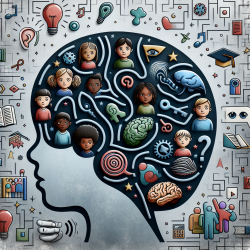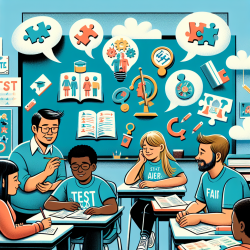Introduction
In the realm of speech-language pathology, understanding the intricate relationship between neurological conditions and language development is crucial. The study titled Patterns of language and auditory dysfunction in 6-year-old children with epilepsy provides valuable insights into the speech and language challenges faced by children with epilepsy. This blog aims to help practitioners enhance their skills by implementing findings from this research or by encouraging further investigation into this critical area.
Key Findings from the Study
The study examined 20 children with epilepsy and 30 reference children, assessing their language and auditory abilities. The research revealed significant differences in auditory attention, perception, and discrimination between children with epilepsy and their peers. Key findings include:
- Children with epilepsy, particularly those with left-sided partial epilepsy, exhibited extensive language dysfunction.
- Phonological dysfunction was prevalent among children with partial epilepsy.
- Children with epilepsy performed significantly worse in auditory attention, perception of vowels, and discrimination of consonants for the right ear, indicating undeveloped language laterality.
Implications for Practitioners
For speech-language pathologists working with children who have epilepsy, these findings underscore the importance of tailored interventions. Here are some strategies practitioners can implement:
- Comprehensive Assessment: Utilize a wide range of tests to assess oral motor ability, phonology, grammar, vocabulary, and auditory attention. This comprehensive approach can help identify specific areas of dysfunction.
- Individualized Intervention Plans: Develop intervention plans that address the unique language and auditory challenges faced by each child. Consider incorporating auditory training exercises to improve attention and discrimination skills.
- Collaboration with Neurologists: Work closely with neurologists to understand the type and site of epileptiform activity, as this can influence language dysfunction patterns.
- Monitor Progress: Regularly assess the child's progress and adjust interventions as needed to ensure optimal outcomes.
Encouraging Further Research
While this study provides valuable insights, it also highlights the need for further research. Practitioners are encouraged to explore the following areas:
- Investigate the long-term impact of epilepsy on language development and educational outcomes.
- Examine the effects of antiepileptic drugs on language and auditory functions.
- Explore interventions that specifically target the development of language laterality in children with epilepsy.
Conclusion
Understanding the patterns of language and auditory dysfunction in children with epilepsy is crucial for developing effective interventions. By leveraging the findings from this study, practitioners can enhance their skills and contribute to better outcomes for children. To read the original research paper, please follow this link: Patterns of language and auditory dysfunction in 6-year-old children with epilepsy.










